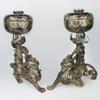'Sensational' Claim: Some Paintings By Gauguin Are Forgeries, Commissioned By His Art Dealer
- July 30, 2020 15:59
Beset by illness and injury, post-Impressionist master Paul Gauguin's life was coming to an end in 1903. Due to his ill health, while he was holed up in the remote French Polynesian islands of Marquesas, Gauguin was not likely to have created paintings dated to that year, contends French-born, self-styled art sleuth Fabrice Fourmanoir, as reported by the Washington Post.
The artist died in May 1903 at the age of 54. He suffered from serious eye problems, an ulcerated leg in a state of rot and his 14-year-old pregnant companion had left him to give birth at her grandmother's.
Fourmanoir thinks some paintings attributed to Gauguin that year are fakes, including the National Gallery of Art's " The Invocation," and the Museum of Fine Art, Boston's "Women and a White Horse." Sebastian Smee writes, "He [Fourmanoir] claims - sensationally - that the forgeries were commissioned by Gauguin's art dealer, Ambroise Vollard, who wanted to profit from a sudden surge in demand for Gauguin's work."
Museum experts say quality issues with some paintings could be attributed to Gauguin's illness at the time.
Fourmanoir previously outed another Gauguin, a "Head With Horns" sculpture at the Getty, as a "fake." But the Gauguin-obsessed art detective himself is a divisive figure, just as the artist Gauguin stirs controversy. Read more of Smee's story in the Washington Post.





















100x100_c.jpg)